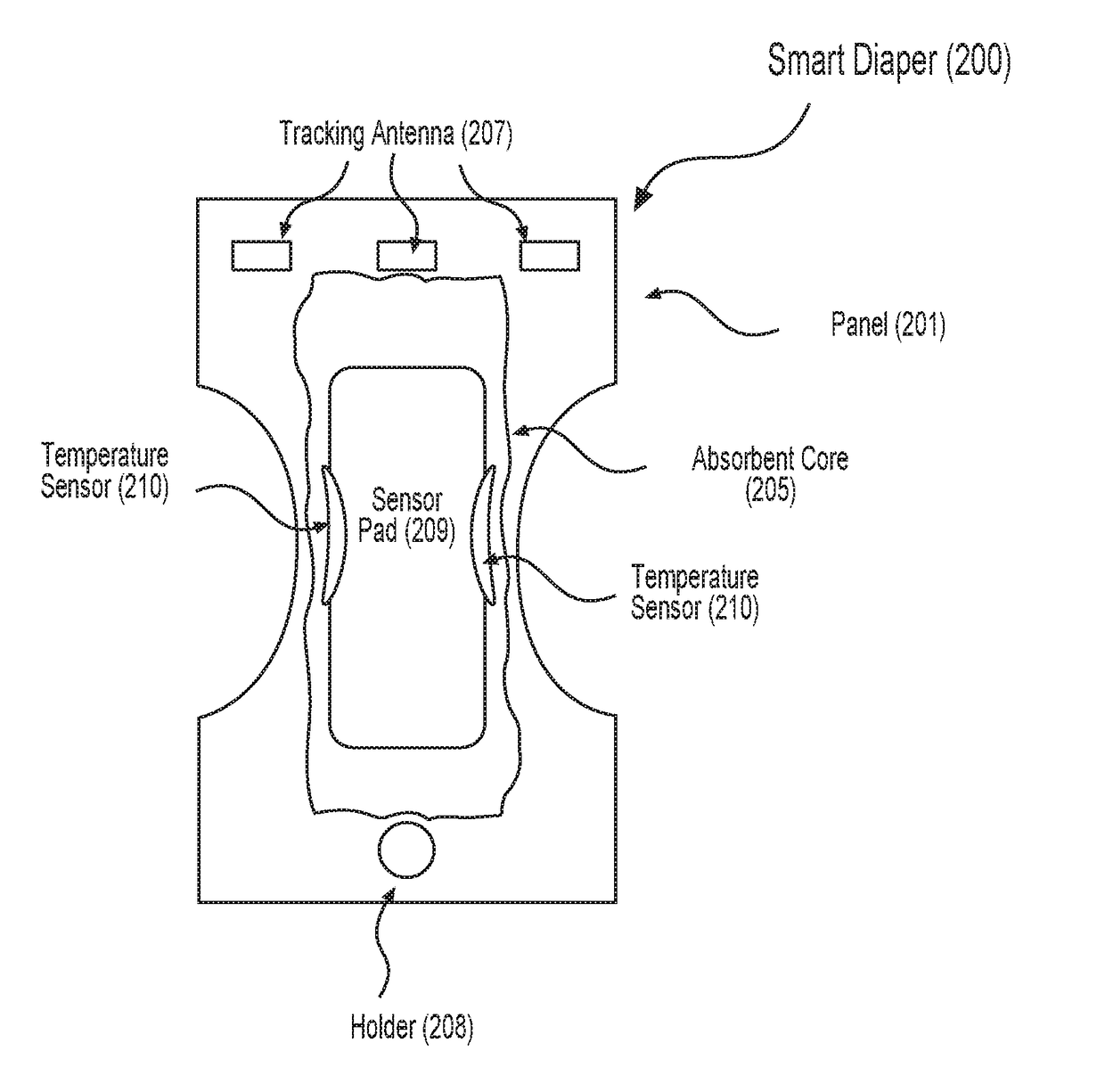System and apparatus for a smart diaper
a diaper and smart technology, applied in the field of smart diaper systems and apparatuses, can solve the problems of diaper detection often being inaccurate, difficult to alert the caretaker, and difficult visual inspection, so as to reduce the workload of the caretaker, improve the comfort of wearers, and improve the effect of hygien
- Summary
- Abstract
- Description
- Claims
- Application Information
AI Technical Summary
Benefits of technology
Problems solved by technology
Method used
Image
Examples
Embodiment Construction
[0033]The Diaper
[0034]The smart diapers of these disclosures can include any type of diaper or nappy known to the persons of ordinary skill in the art. FIG. 1 illustrates an example smart diaper according to an example embodiment. In this embodiment, the smart diaper 100 includes a front panel 101 and a back panel 102. The front panel 101 is connected to the back panel 102 at a midway point 103 to form a one-piece article. In other embodiments, the smart diaper 100 can be a one-piece article, which includes only one panel. Other arrangements are also conceivable by one of ordinary skill in the art.
[0035]In some embodiments, the smart diaper 100 can include at least one connection element 104, which can be a tape, loop and hook element, etc. The connection element 104 can be attached either to the front panel 101 or to the back panel 102. A caretaker (or a wearer) can position the front panel 101 on the crutch region and the back panel 102 on the bottom region of a wearer, and secure...
PUM
 Login to View More
Login to View More Abstract
Description
Claims
Application Information
 Login to View More
Login to View More - R&D
- Intellectual Property
- Life Sciences
- Materials
- Tech Scout
- Unparalleled Data Quality
- Higher Quality Content
- 60% Fewer Hallucinations
Browse by: Latest US Patents, China's latest patents, Technical Efficacy Thesaurus, Application Domain, Technology Topic, Popular Technical Reports.
© 2025 PatSnap. All rights reserved.Legal|Privacy policy|Modern Slavery Act Transparency Statement|Sitemap|About US| Contact US: help@patsnap.com



